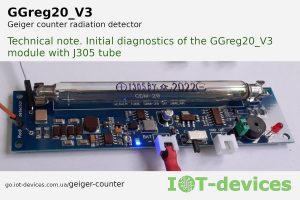We manufactured and started selling a new module I2CUI1 .
1. General overview. This is a panel that can be mounted on the wall of the case to control the device. A joystick is installed for control. An RGB LED is installed to indicate the status of the device and audio signals are output to the buzzer. Interaction with the controller via the I2C digital interface; The module will be convenient to use in many custom projects based on ESP8266 or Arduino. The panel also has a connector with an I2C interface to make it easy to connect external devices – such as a digital thermometer.
2. You may like this module as follows solutions :
- During the design of one of our devices, the task was to place five buttons in a “tight” case. Accidentally found joystick prompted us to this elegant solution, which in practice did not disappoint us. So, instead of traditional buttons on I2CUI1 the compact joystick which in the case of the clock button unites 5 buttons (left, right, up, down, OK) is established;
- The GPIO PCA9538 expander mounted on the board solves two tasks – convenient removal (for example, if necessary to install on the walls of the case) of the panel from the main controller with a compact two-wire bus I2c and simultaneously installed popular control and indication components;
- A wide range of supply voltage allows to integrate the module in systems on ESP8266 and Arduino;
- Hardware protection against “rattle” of joystick contacts;
- Installed on the module buzzer is connected by a separate bus to the GPIO controller, because all the ports of the expander are occupied by the LED and the joystick. At first glance, this is a disadvantage, but in our experience, buzzer must be able to control the software (volume, sound effects). If the buzzer was connected to the GPIO of the expander, only software on / off would be available, because the PCA9538 port expander does not support the PWM mode required for control;
- The INT bus is activated each time the joystick is pressed and initiates a software interrupt to handle the joystick states;
- Compactness and quality of workmanship.
instead of traditional buttons on I2CUI1 the compact joystick which in the case of the clock button unites 5 buttons (left, right, up, down, OK) is established
3. Example of application of the module .
In a few minutes we made the thermostat, using:
| Module name | Number | Link |
|---|---|---|
| ESP12.OLED controller | 1 | ESP12.OLED_V1. Set 2. IoT controller without display based on ESP8266-12F |
| I2CUI1 | 1 | I2CUI1 user interface module |
| Digital temperature sensor on the LM75 chip | 1 | Made yourself |
| Power supply module | 1 | Power supply module on the battery 16340 |
| Relay module | 1 | In this test layout, the relay was simulated with a buzzer. To make a thermostat, you need to connect a relay with a winding and contacts in accordance with the power of household appliances to be controlled. |
| Connection | 12 | Common among IoT-shniki connecting PLS tires mom-mom length of 10 cm. |
Of course, the thermostat requires the development of original software.
We will be grateful for the support of our page at and purchase of goods in our store. iot-devices.com.ua
and purchase of goods in our store. iot-devices.com.ua
